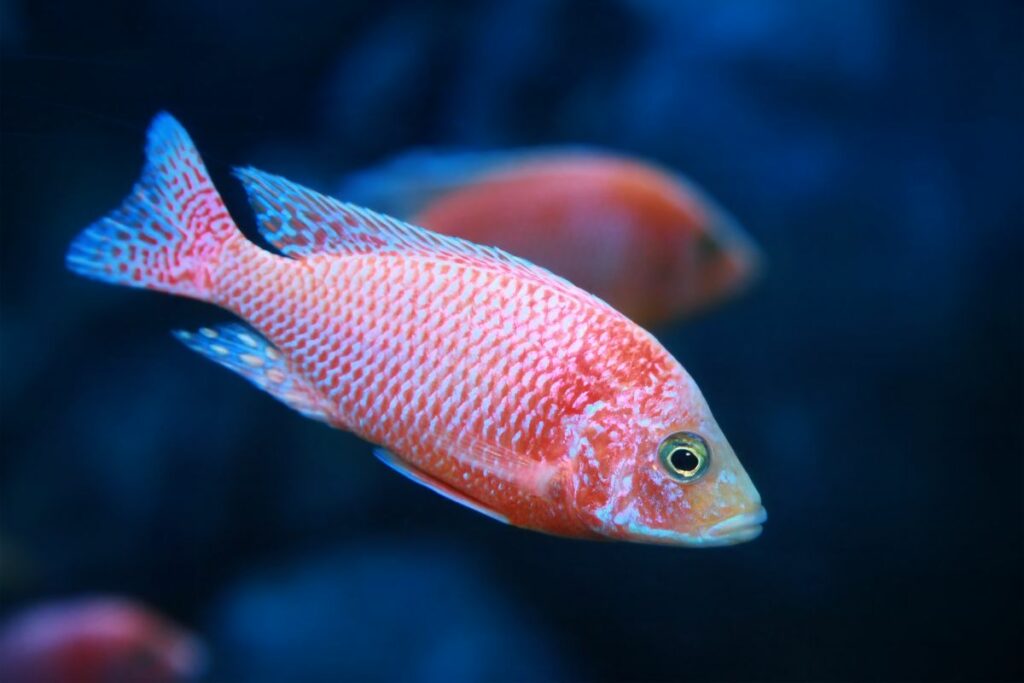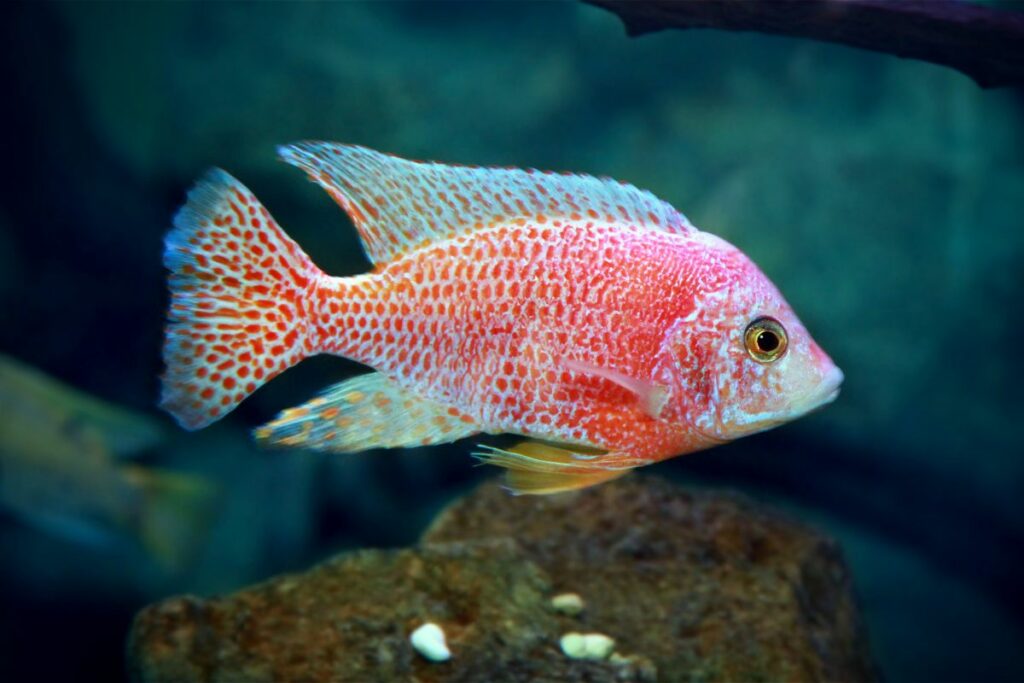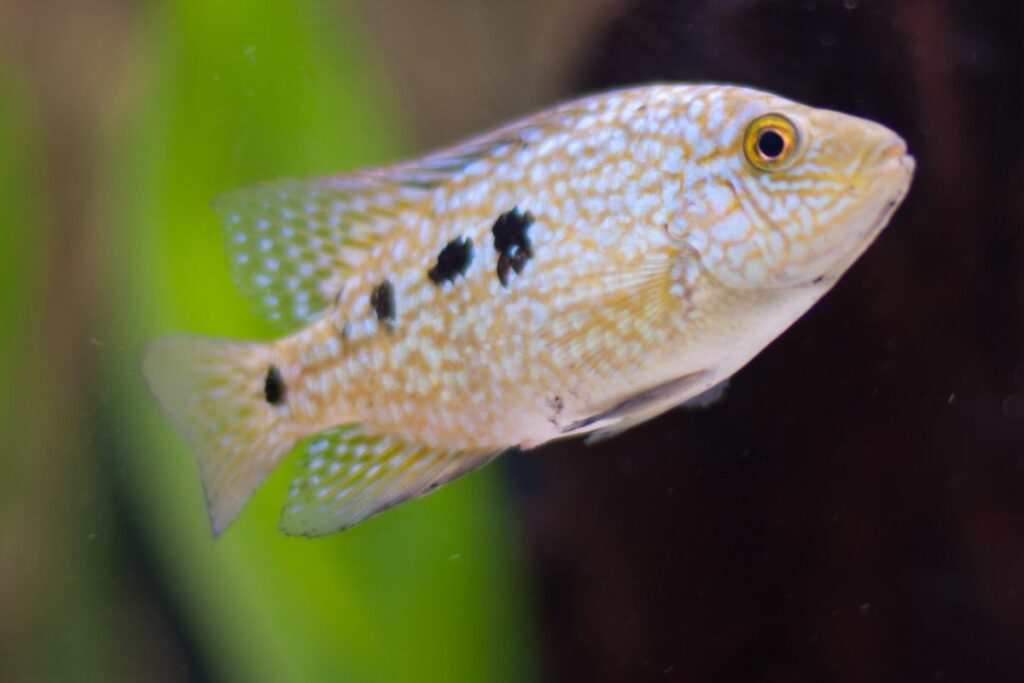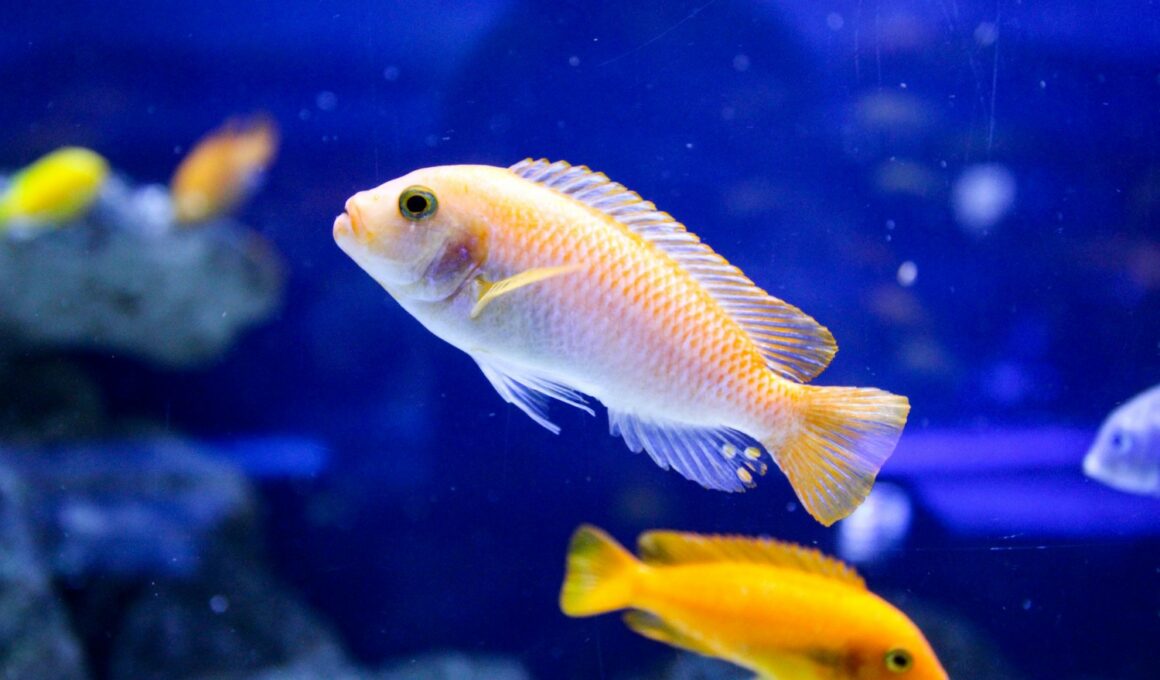In this article Show
If you’re here, chances are you’ve heard about the vibrant, active, and incredibly fascinating African Cichlids. These fish are a dream for many aquarium enthusiasts, and for good reason.
Hailing from the great lakes and rivers of Africa, they bring a burst of color and life to any aquarium setup. Now, whether you’re considering adding these beautiful fish to your home aquarium or you’ve just got your hands on a few, you might be wondering, “How do I take good care of them?”
Well, you’re in the right place! I’ve spent years maintaining various aquariums, and I’m excited to share with you this comprehensive guide on African cichlid care.
From setting up your tank to understanding their dietary needs and even extending their lifespan, we’re going to cover it all. So, let’s dive right in!

Understanding African Cichlids
First things first, let’s talk about what makes African Cichlids so captivating. These fish come in an array of colors, sizes, and temperaments. From the electric blue Mbuna to the colorful Peacock Cichlids, there’s a species for every fish enthusiast out there.
1. Types of African Cichlids
- Mbuna: These are rock-dwellers found primarily in Lake Malawi. Known for their bright colors and social behavior.
- Peacock Cichlids: Also from Lake Malawi, these fish are less aggressive than most other cichlids and are known for their stunning colors.
- Lake Tanganyika Cichlids: These include a variety of species, like the Frontosa and the Julidochromis, each with its own unique behavior and appearance.
2. Physical Characteristics
- Size: African Cichlids generally range from 3 to 8 inches, depending on the species.
- Color: Known for vibrant colors, they exhibit a multitude of hues, including blue, yellow, red, and even black stripes or spots.
3. Natural Habitat
Understanding the natural habitat of African Cichlids can give you insights into how to replicate those conditions in your home aquarium.
- Lakes and Rivers: These fish are native to the Great Rift Valley’s lakes, primarily Lake Malawi, Lake Tanganyika, and Lake Victoria. Some are also found in rivers and streams.
- Water Conditions: The water in their natural habitat is generally hard with a higher pH level. The lakes are also highly oxygenated, which helps these active fish thrive.
By understanding the types of African Cichlids and their natural living conditions, you can better tailor your home aquarium to meet their needs. This foundation will set the stage for everything else we’re going to discuss—from tank setup to diet, and beyond.
Appropriate Tank Setup For African Cichlids
Here are the recommended ways in which the African cichlids tank should be set up:
1. Choosing The Right Tank
Before you even think about adding fish, you need to select the right aquarium. Trust me, your choice of tank can make or break your cichlid-keeping experience.
- Aim for at least a 55-gallon tank if you’re planning on keeping a community of cichlids. Smaller tanks can cause stress and territorial disputes among your fish.
- Both glass and acrylic tanks work well. However, glass is generally more scratch-resistant, while acrylic is lighter and offers more shape options.
- To mimic the natural habitat of African Cichlids, you’ll need to get your water parameters just right.
- African Cichlids prefer a higher pH level, usually between 7.8 and 8.6. Use pH adjusters or specific substrates to maintain this range.
- Keep the water temperature consistent, ideally between 75°F and 80°F (24°C to 27°C).
- These fish thrive in harder water, so aim for a hardness level of 4 to 6 dGH.
2. Filtration And Aeration
Good filtration is a must to keep your African Cichlids healthy. Canister filters or sump filters are often recommended for larger cichlid tanks.
These handle both mechanical and biological filtration effectively. A well-oxygenated tank mimics the cichlids’ natural habitat. Air stones or an efficient filter output can help achieve proper aeration.
3. Substrate and Decorations
Lastly, let’s talk about making your tank look and feel like home for your African Cichlids. It is best to opt for aragonite or crushed coral substrates to help maintain the higher pH levels that these fish prefer.
African Cichlids are notorious diggers, so opt for hardy plants like Java Fern or Anubias. Include plenty of rocks and caves for hiding and territorial establishment.
By focusing on these tank setup essentials, you’re creating an environment where your African Cichlids can thrive.

Diet And Nutrition
If you are wondering what are the important factors to take note of when feeding African cichlids, the following will provide you with a clear idea:
1. Feeding Guidelines
The first rule of feeding African Cichlids is not to overfeed. Seriously, they’ll eat like there’s no tomorrow, but that doesn’t mean they should. These fish are primarily omnivores.
While commercial cichlid pellets and flakes are convenient, don’t overlook live or frozen options like brine shrimp or bloodworms. Feed your African Cichlids once or twice a day. Smaller, more frequent feedings are generally better than one large feeding.
2. Nutritional Requirements
Getting the nutrition right is pivotal for the long-term health of your cichlids. Look for foods rich in protein and low in fats.
A good cichlid food will also contain essential vitamins and minerals. Steer clear of mammal meats like beef heart or chicken, as they can be tough for cichlids to digest and may lead to health issues.
Variety is the spice of life, and that holds true for your African Cichlids as well. By providing a balanced and varied diet, you’re not just keeping them alive; you’re helping them thrive.

Behavior and Compatibility
African Cichlids are known for their lively personalities, but let’s be clear: they’re not always the friendliest neighbors in a fish tank.
1. Social Behavior
While it varies by species, most African Cichlids are territorial and can be aggressive, especially during breeding seasons. Knowing how to manage this aggression is crucial for keeping a peaceful tank.
When it comes to hierarchy, establishing a pecking order is natural for these fish. You may observe dominance displays, which usually don’t result in harm as long as there’s enough space and hiding spots.
2. Compatibility
A peaceful tank is a happy tank. So, whom should you pair with your African Cichlids? Generally, it’s best to keep them with fish of similar size and temperament.
Other types of cichlids, some catfish, and robust barbs can be good options. Avoid slow-moving, long-finned, or smaller fish that can easily become the target of aggression.
3. Breeding
If you’re thinking of breeding your African Cichlids, a few things should be considered, and one of them is the signs of readiness. Look out for pairing behaviors and color changes.
Males often display brighter colors when ready to breed. A stable environment is key. Maintain consistent water parameters and provide ample hiding spots for females.
Compatibility and behavior are complex topics, but understanding them makes your journey as an African Cichlid keeper much more rewarding.
Health and Lifespan
The following are the common health issues, preventive measures to keep the common health problems at bay, and life expectancy of African cichlids;
1. Common Health Issues
Like all aquarium fish, African Cichlids are susceptible to certain health issues. Being aware of these can help you take preventive measures.
- Ichthyophthirius (Ich): This is a common parasite that causes white spots on the fish’s body. Prompt treatment with antiparasitic medication is essential.
- Fin Rot: Usually a result of poor water quality, fin rot causes the fish’s fins to fray and discolor. Improve water conditions and consider antibiotic treatments.
- Malawi Bloat: Primarily affecting cichlids from Lake Malawi, this condition can be fatal if not treated. Symptoms include swelling and loss of appetite. Consult a vet for proper diagnosis and treatment.
2. Preventive Measures
An ounce of prevention is worth a pound of cure. Here are some guidelines to keep your fish healthy:
- Water Quality: Consistent and ideal water parameters are the cornerstone of fish health. Regularly test your water and adjust as needed.
- Quarantine New Fish: Always quarantine new additions for at least two weeks to avoid introducing diseases into your main tank.
- Diet: A balanced diet not only keeps your fish happy but also boosts their immune system, making them less susceptible to diseases.
3. Lifespan
African Cichlids can live a long and happy life if cared for properly.
- Average Lifespan: Depending on the species and care, African Cichlids can live anywhere from 5 to 10 years in captivity.
- Factors Affecting Lifespan: Diet, water quality, and stress levels are major factors that can influence how long your fish live.
- By taking proactive steps to maintain a healthy environment, you’re setting your African Cichlids up for a long, fulfilling life.
In Closing
Taking care of African Cichlids might seem like a lot at first, but trust me, it’s well worth the effort. From setting up the right tank environment to offering a balanced diet and understanding their behavior, all these elements contribute to the well-being of your vibrant fish friends.
And let’s not forget—proper care can extend their lifespan, giving you many years to enjoy their captivating colors and personalities.






